Medicine > QUESTIONS & ANSWERS > ACLS: FINAL TEST QUESTIONS AND ANSWERS CREATED FOR 2022 (All)
ACLS: FINAL TEST QUESTIONS AND ANSWERS CREATED FOR 2022
Document Content and Description Below
1. Your patient is in cardiac arrest and has been intubated. To assess CPR quality, which should you do? - ANSWER A) Monitor the patient's PETCO2 2. Which facility is the most appropriate EMS desti... nation for a patient with sudden cardiac who achieved return of spontaneous circulation in the field? - ANSWER D) Coronary reperfusion-capable medical center 3. Which of the following signs is a likely indicator of cardiac arrest in an unresponsive patient? - ANSWER C) Agonal gasps 4. To properly ventilate a patient with a perfusing rhythm, how often do you squeeze the bag? - ANSWER B) Once every 5 to 6 seconds. 7. In addition to clinical assessment, which is the most reliable method to confirm and monitor correct placement of an endotracheal tube? - ANSWER C) Continuous waveform capnography 5. You are caring for a patient with a suspected stroke whose symptoms started 2 hours ago. The CT scan was normal, with no signs of hemorrhage. The patient does not have any contraindications to fibrinolytic therapy. Which treatment is the best for this patient? - ANSWER B) Start fibrinolytic therapy as soon as possible. 6. What is the recommended range from which a temperature should be selected and maintained constantly to achieve targeted temperature management after cardiac arrest? - ANSWER C) 32 to 36 Degrees Celsius 7. Which is the recommended first intravenous dose of amiodarone for a patient with refractory ventricular fibrillation? - ANSWER D) 300 mg 8. What is the primary of a medical emergency team or rapid response team? - ANSWER B) Improving patient outcomes by identifying and treating early clinical deterioration. 9. What is the recommended next step after a defibrillation attempt? - ANSWER D) Resume CPR, starting with chest compressions 10. EMS providers are treating a patient with suspected stroke. According to the Adult Suspected Stroke Algorithm, which critical action performed by the EMS team will expedite this patient's care on arrival and reduce the time to treatment? - ANSWER A) Alert the hospital. 11. Your rescue team arrives to find a 59-year-old man lying on the kitchen floor. You determine that he is unresponsive. Which is the next step in your assessment and management of this patient? - ANSWER B) Check the patient's breathing and pulse. 12. Which best describes the length of time it should take to perform a pulse check during the BLS assessment? - ANSWER B) 5 to 10 seconds 13. You instruct a team member to give 1 mg Atropine IV. Which is the best example of closed-loop communication? - ANSWER C) I'll draw up 1 mg of Atropine. 14. What is an effect of excessive ventilation? - ANSWER A) Decreased cardiac output. 15. If a team member is about to make a mistake during a resuscitation attempt, which best describes the action that the team leader or other team members should take? - ANSWER C) Address the team members immediately. 16. For STEMI patient, which best describes the recommended maximum goal time for emergency department door-to-balloon inflation time for percutaneous coronary intervention? - ANSWER D) 90 minutes. 17. Which is the maximum interval you should allow for an interruption in chest compressions? - ANSWER A) 10 seconds. 18. Which is the one way to minimize interruptions in chest compressions during CPR? - ANSWER D) Continue CPR while the defibrillator charges. 19. Which best describes an action taken by the team leader to avoid insufficiencies during a resuscitation attempt? - ANSWER C) Clearly delegate tasks. 20. Which is an acceptable method of selecting an appropriately sized oropharyngeal airway? - ANSWER A) Measure the corner of the mouth to the angle of the mandible. 21. You are evaluating a 58-year-old man with chest discomfort. His blood pressure is 92/50 mm Hg, his heart rate is 92/min, his nonlabored respiratory rate is 14 breaths/min, and his pulse oximetry reading is 97%. Which assessment step is most important now? - ANSWER C) Obtaining a 12-lead ECG. 22. A patient in respiratory distress and with a blood pressure of 70/50 mmHg presents with the lead IIECG rhythm shown here. Which is the appropriate treatment? - ANSWER B) Performing synchronized cardioversion. 23. During post-cardiac arrest care, which is the recommended duration of targeted temperature management after reaching the correct temperature range? - ANSWER B) At least 24 hours. [Show More]
Last updated: 2 years ago
Preview 1 out of 4 pages
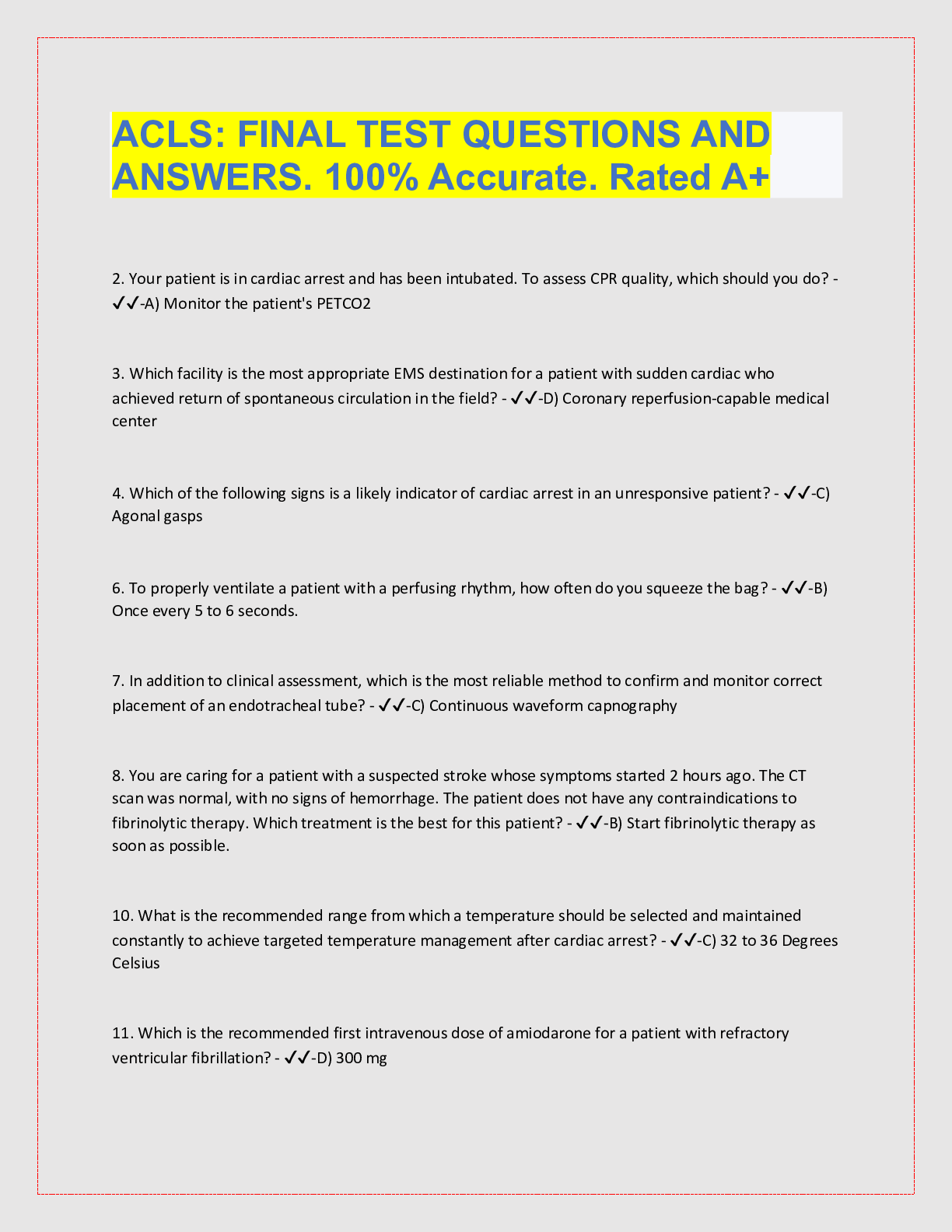
Buy this document to get the full access instantly
Instant Download Access after purchase
Buy NowInstant download
We Accept:

Reviews( 0 )
$8.00
Can't find what you want? Try our AI powered Search
Document information
Connected school, study & course
About the document
Uploaded On
Oct 03, 2022
Number of pages
4
Written in
Additional information
This document has been written for:
Uploaded
Oct 03, 2022
Downloads
0
Views
57












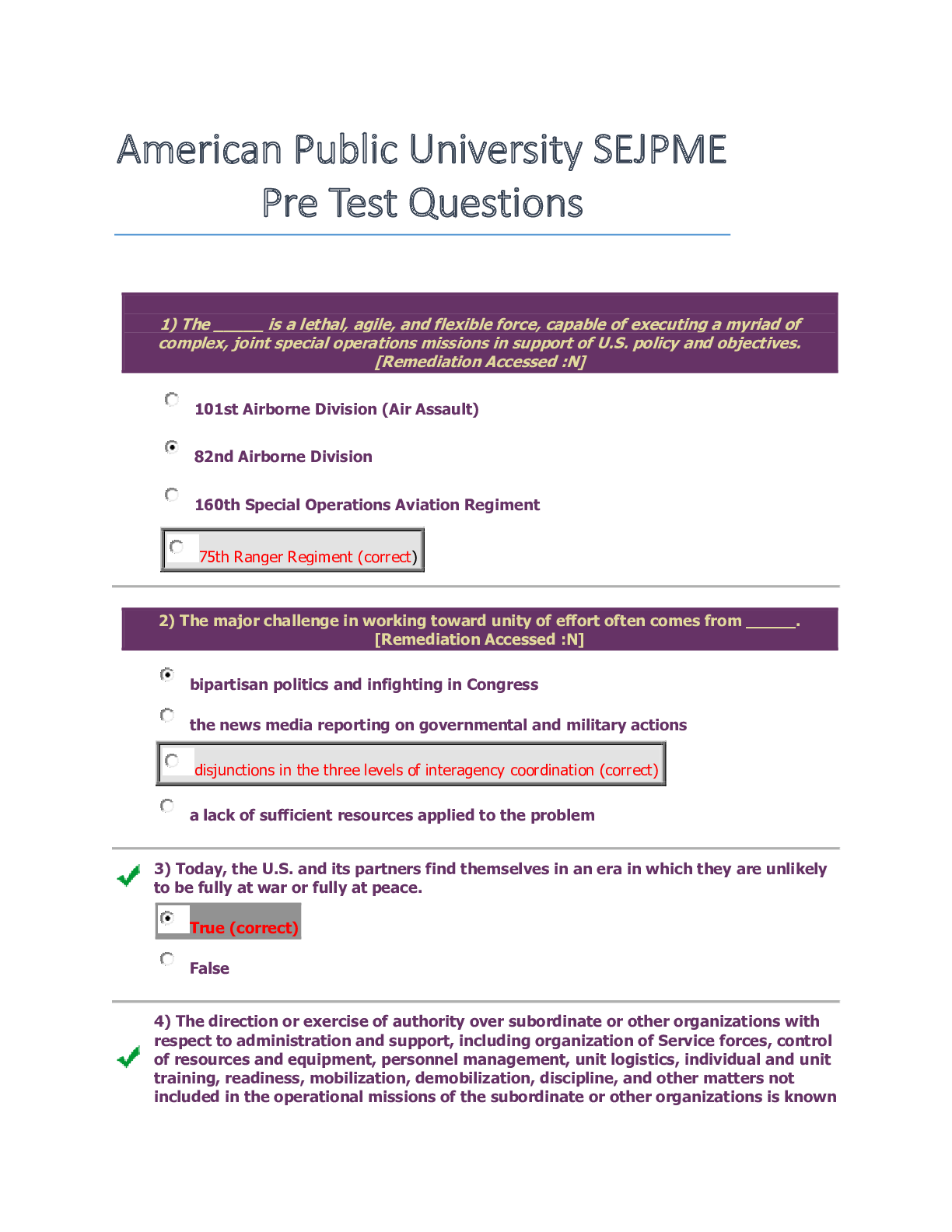
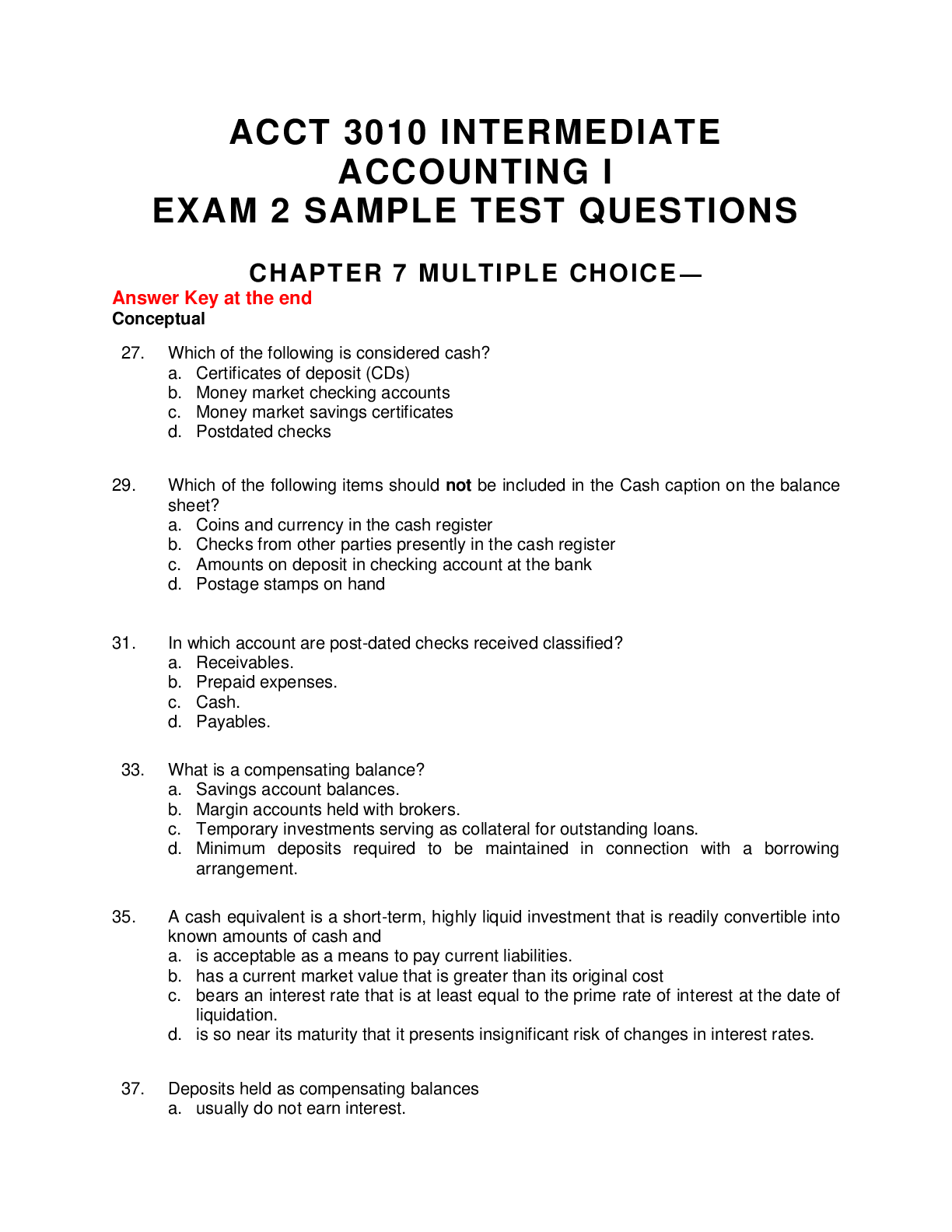

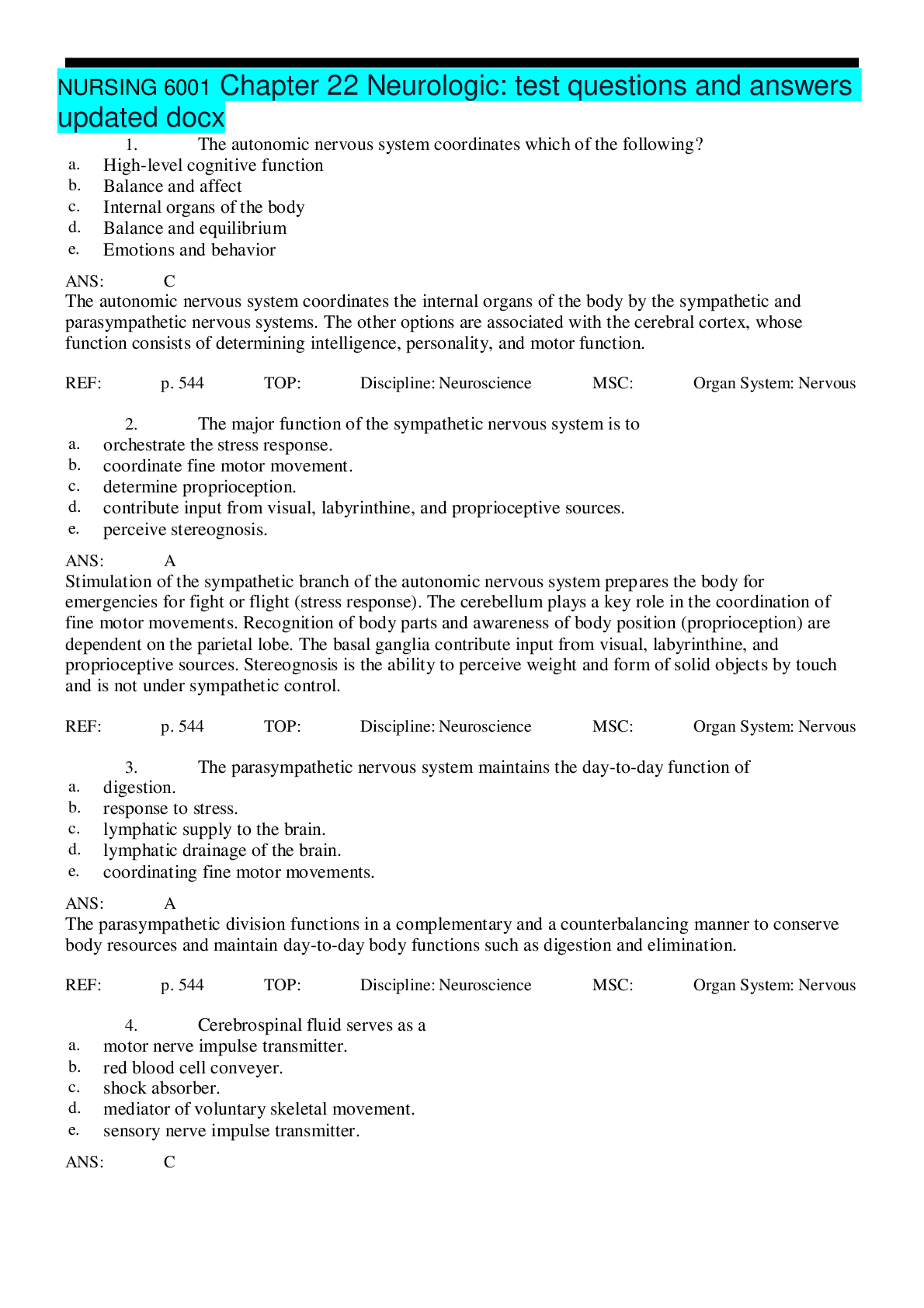
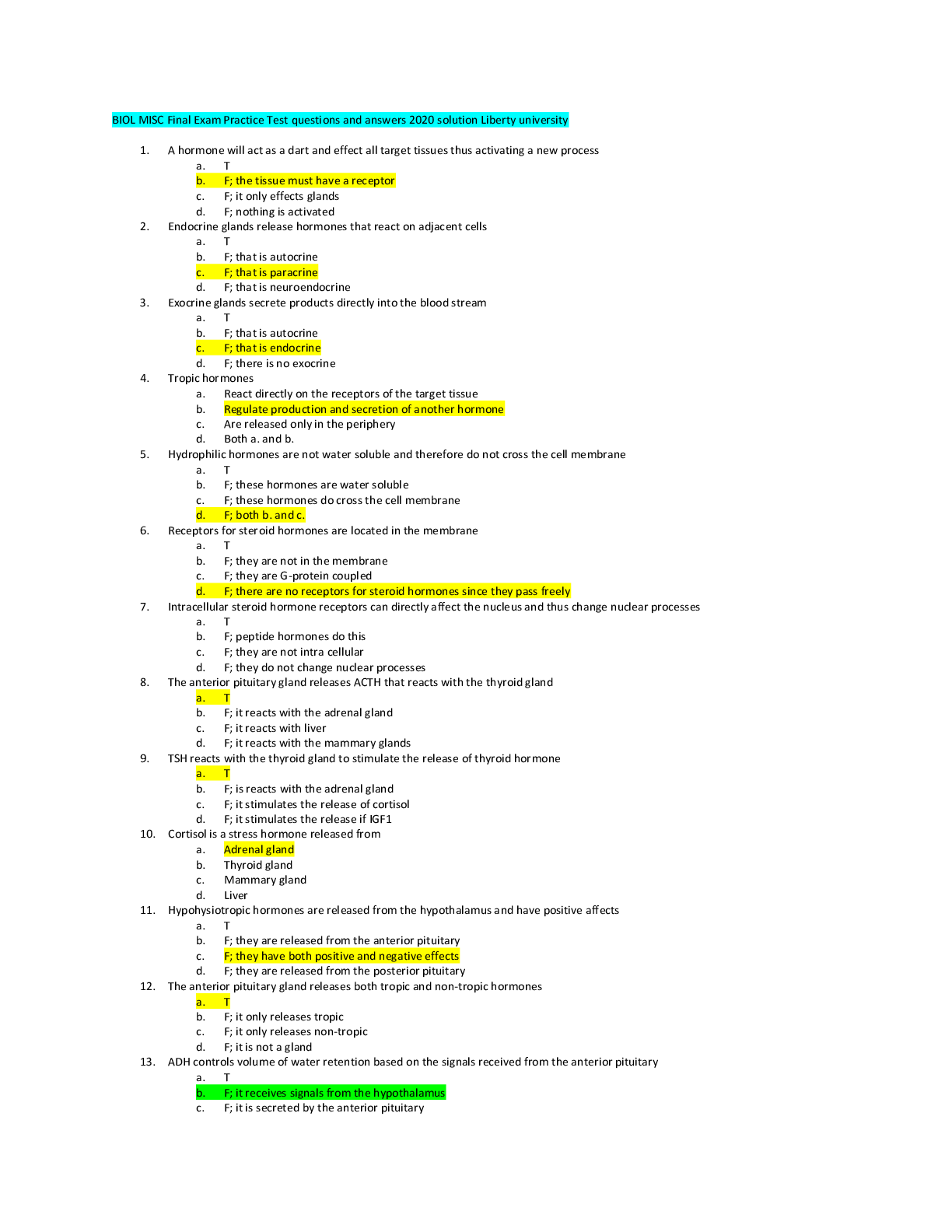
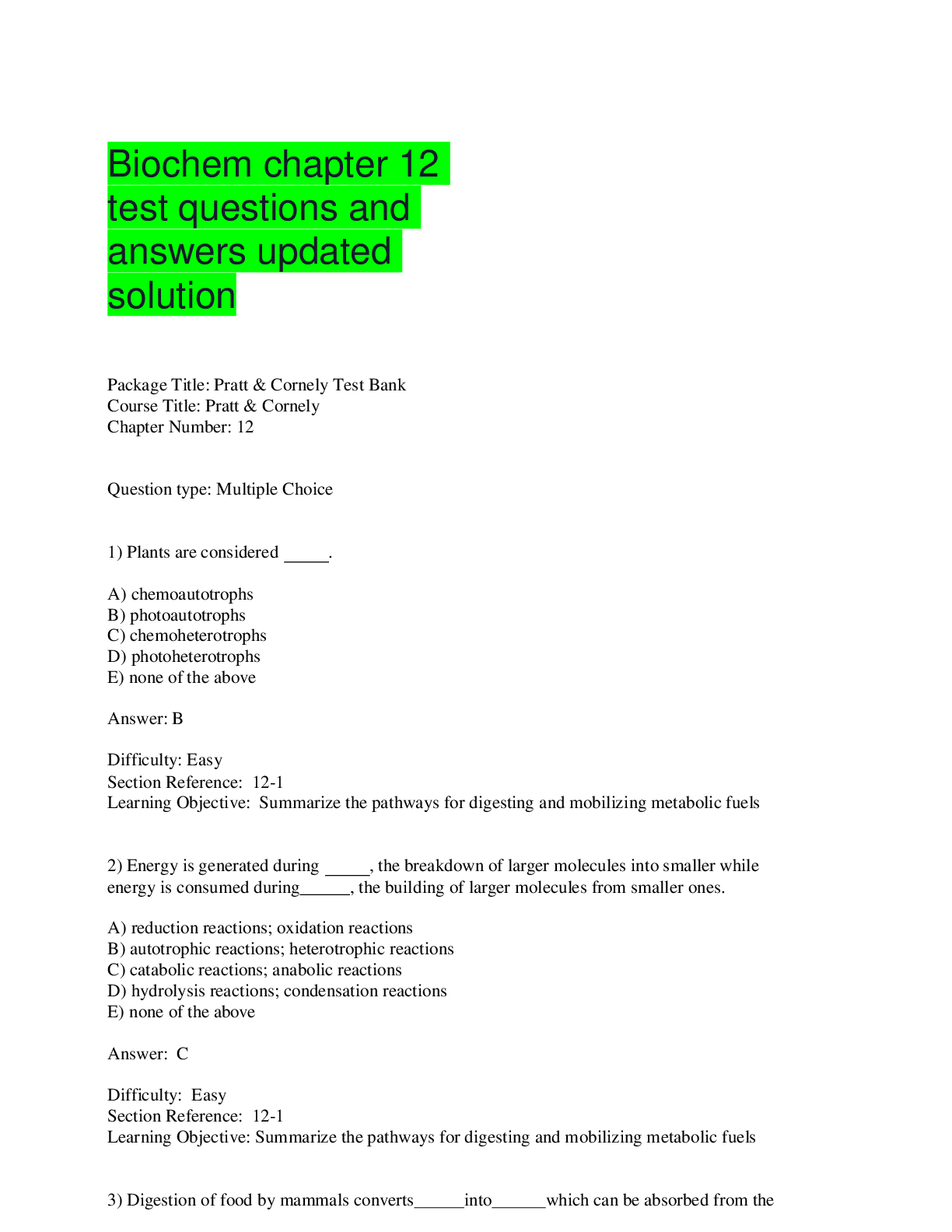


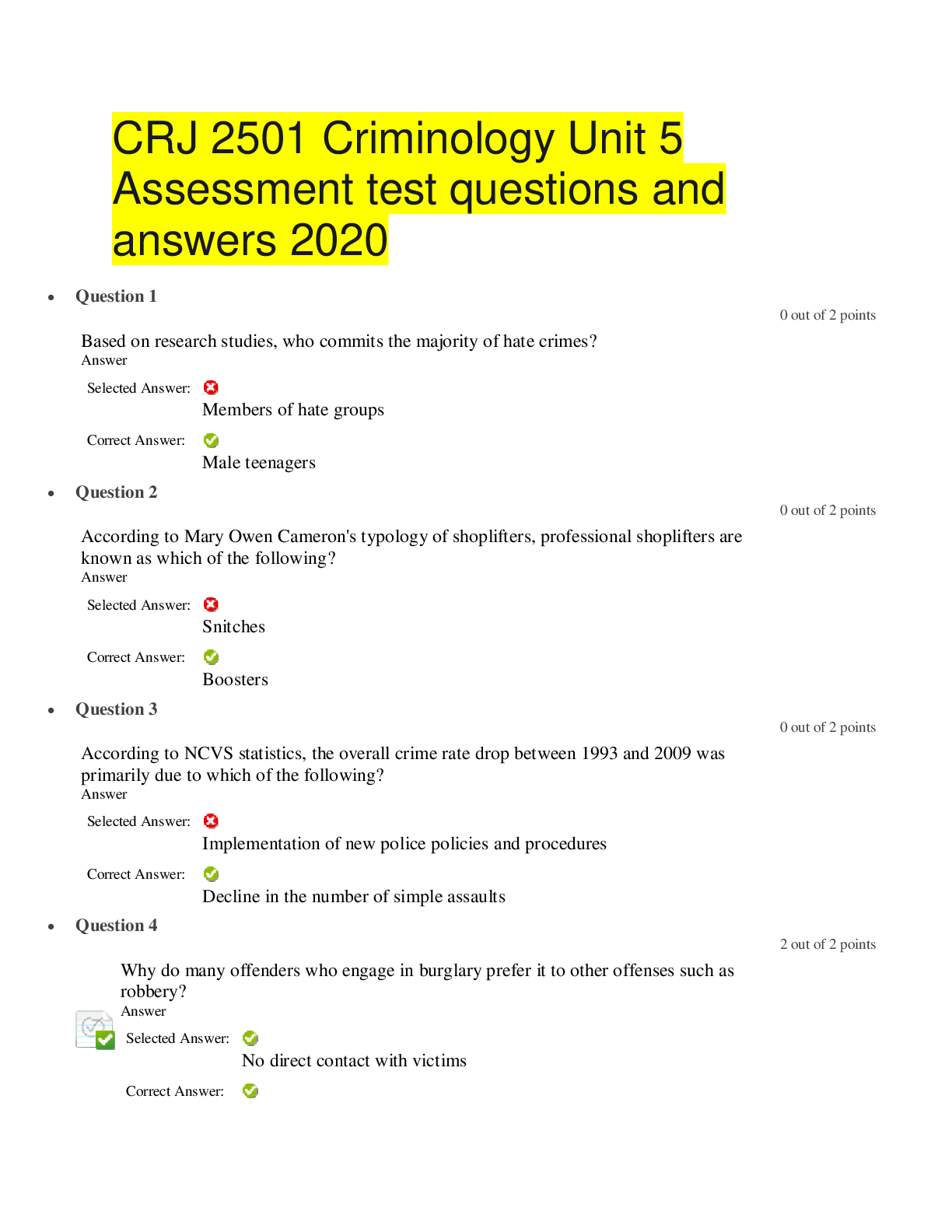
 Med Surg test Questions and Answers with Explanations, 100% Correct, Download to Score A.png)
 Med Surg test Questions and Answers with Explanations, 100% Correct, Download to Score A.png)

